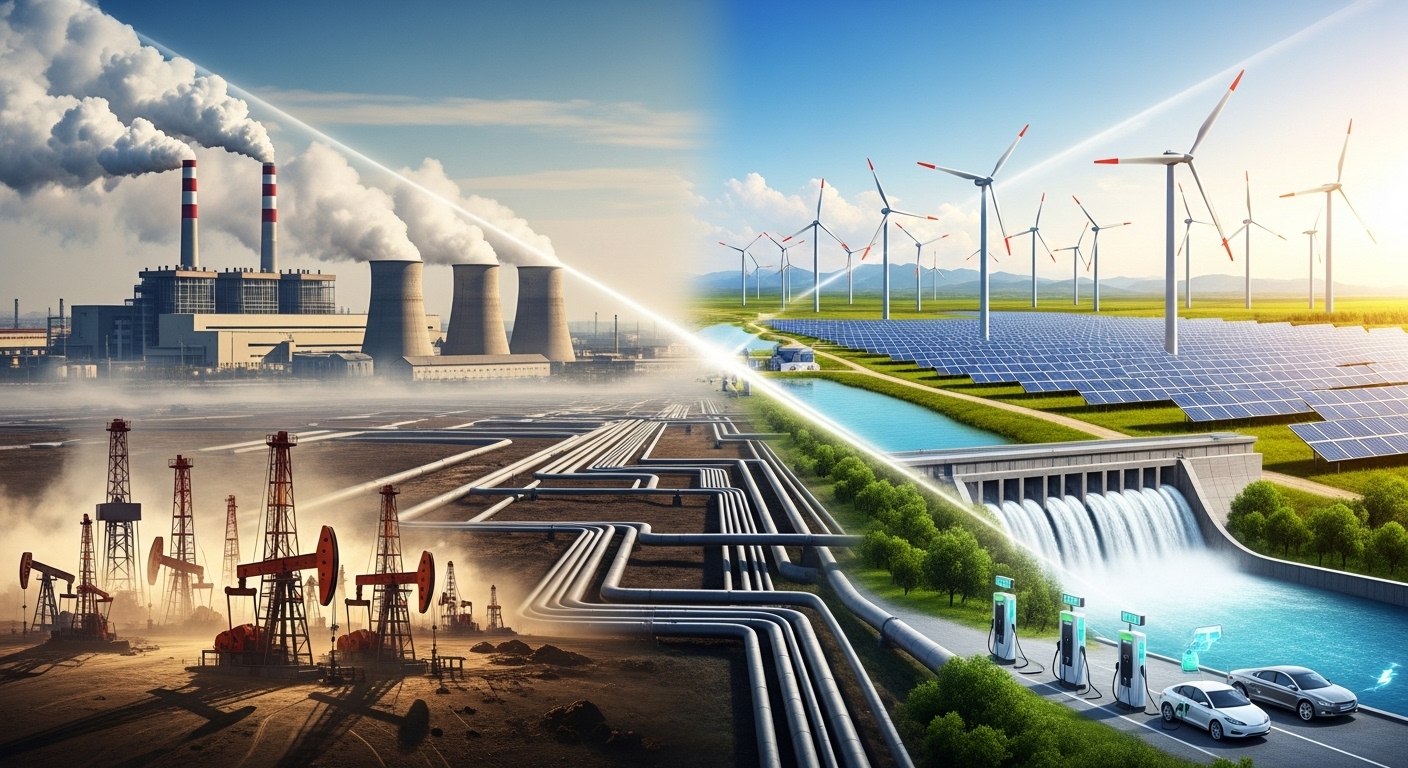You’re witnessing the end of an era. Since the industrial age began, you’ve seen the global economy demand ever-increasing amounts of fossil fuels—coal, oil, and gas—to power growth. But that’s changing before your eyes.
China’s aggressive push to sell batteries, solar panels, and wind turbines worldwide is fundamentally reshaping the energy landscape you know. A new report reveals that Chinese dominance of clean-energy industries is “creating the conditions for a decline in fossil fuel use,” marking a historic turning point you’re living through.
The Price Revolution You’re Experiencing
You’re seeing the results of China’s massive production scale since 2010, which has driven the price of renewable technologies down by 60 to 90 percent. Last year, more than 90 percent of wind and solar projects commissioned worldwide produced power more cheaply than the cheapest available fossil-fuel alternative. This cost advantage would have seemed impossible before China began pumping billions of dollars in subsidies into the sector.
China has become the engine driving this transformation, changing the energy landscape not just domestically but in countries you see across the world. If Beijing is competing with anyone for the future of energy, you’ll notice it’s the United States—the world’s biggest oil and gas producer and exporter. While the Trump administration has eliminated almost all federal support for renewable energies and pressured countries to buy American fossil fuels, you’re watching China take a completely different approach.
The Global Shift You’re Observing
The falling cost of renewable energy means many countries, particularly poorer ones, have strong incentives to reduce their reliance on fossil fuels. You can see this playing out as countries like Mexico, Bangladesh, and Malaysia have raced past the United States in recent years in using renewably produced electricity for everyday activities like heating, cooling buildings, and powering vehicles.
Across Africa, you’ve witnessed solar panel imports from China rise 60 percent in the last 12 months, with 20 African countries importing record amounts over that period. American companies, who don’t manufacture solar panels or wind turbines at anywhere near Chinese scale, find themselves at a major disadvantage. You’re now seeing Chinese companies supply 80 percent of solar panels and 60 percent of wind turbines worldwide.
Why China is Winning This Race
You should understand that China has pushed for renewable energy dominance partly for economic reasons and to protect its national security by limiting reliance on oil imports. But the implications for planetary health couldn’t be greater. Scientific consensus has long held that sharp declines in fossil fuel use represent the surest way to lessen climate change pace.
For too long, you’ve watched emerging economies face what seemed like a stark trade-off between growth and sustainability. This new reality challenges that assumption, offering you a glimpse of a different future where economic development and environmental protection can coexist.
The Challenges You Should Recognize
You need to understand that some countries remain reluctant to rely so heavily on Chinese technology for geopolitical reasons. Few developing countries have the spending capacity to install the energy transmission and storage systems that allowed China to transform its domestic energy grid so quickly.
The timing of when global fossil fuel use peaks depends heavily on the pace of change within China itself. You should know that China still burns more coal than the rest of the world combined and emits more climate pollution than the United States and Europe together. The country hasn’t yet seen an overall decline in coal usage, though its total greenhouse gas emissions appear to have plateaued.
The Transformation You’re Witnessing in China
Last year, you saw China meet 84 percent of its electricity demand growth with solar and wind power. This allowed the country to cut fossil fuel use by 2 percent despite growing power demand—a remarkable achievement you’re watching unfold in real time.
This decline in fossil fuel use comes largely from burning less coal to produce electricity. You can observe recent policy directives reallocating subsidies and production incentives away from coal toward solar and wind technologies.
China continues building dozens of new coal-burning power plants, but instead of running constantly like existing ones, these might operate at full capacity only during peak energy demand periods. Meanwhile, wind and solar contributions to the grid grow rapidly, with coal increasingly acting like training wheels—providing balance and backup while the clean electricity system gains strength and confidence.
The Economic Reality You Need to Understand
You’re seeing China’s economy become increasingly reliant on the clean energy sector. Investment and production in clean energy last year contributed nearly $2 trillion to China’s economy—around one-tenth of the country’s entire economic output, comparable to Australia’s complete economy.
The clean energy sector grew at a rate three times that of China’s overall economy, demonstrating the massive economic transformation you’re witnessing. This isn’t just about environmental policy—you’re observing a fundamental economic restructuring that’s reshaping global power dynamics.
What This Means for Your Future
You’re living through a pivotal moment in human history. The energy systems that powered the industrial age are giving way to something entirely new, driven by Chinese manufacturing prowess and global economic incentives. Whether you’re in a developed or developing country, these changes will affect how you power your home, travel, and work.
The question isn’t whether this transformation will happen—you’re already seeing it unfold. The question is how quickly it will accelerate and how different regions will adapt to this new energy reality that China is helping to create.

Join The Discussion